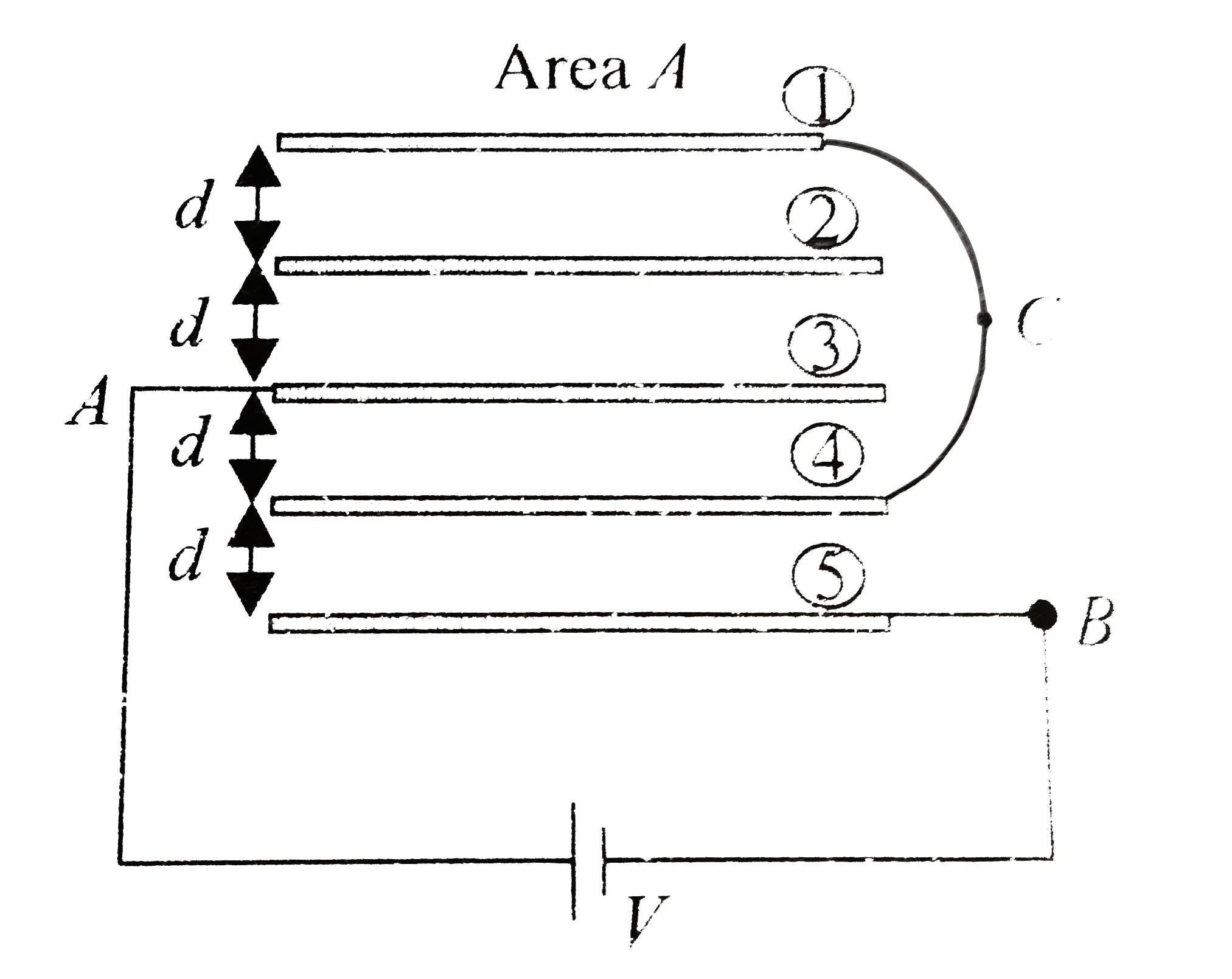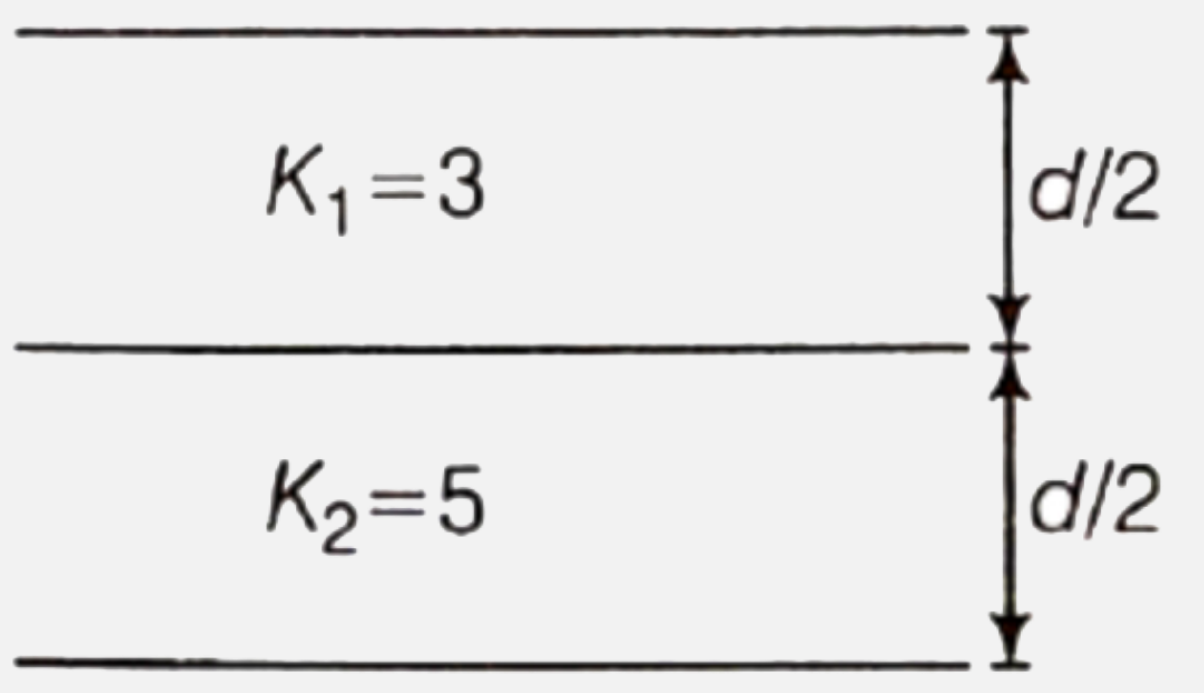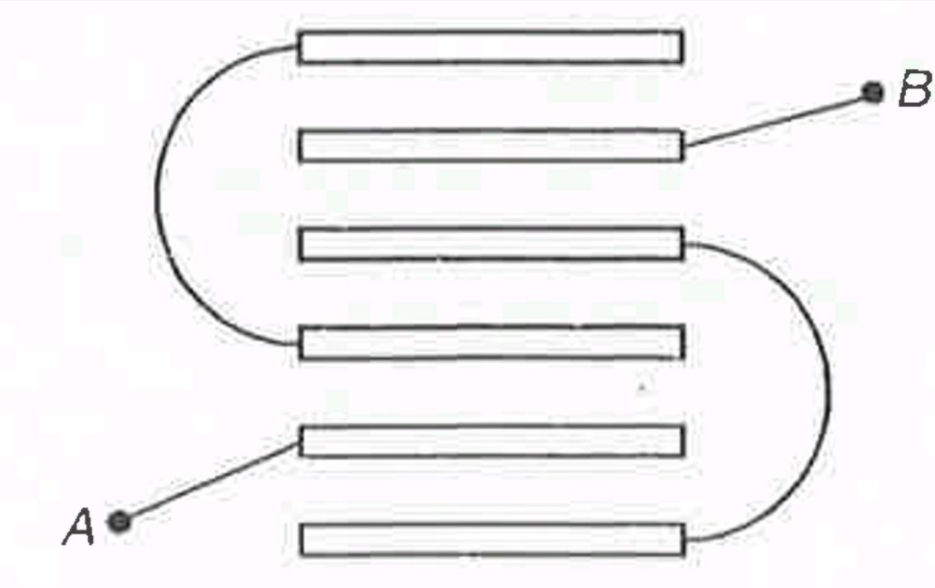A liquid flows between two parallel plates along the x-axis. The difference between the velocity of two layers separated by the distance dy is dv. IfA is the area of each plate, then Newton's law of viscosity may be written as
F=−ηAdvdx
F=+ηAdvdx
F=−ηAdvdy
F=+ηAdvdy
The correct Answer is:C
To derive the expression for Newton's law of viscosity in the context of a liquid flowing between two parallel plates, we can follow these steps:
1. Understanding the Setup:
- Consider two parallel plates separated by a distance dy.
- The velocity difference between two layers of fluid at these plates is denoted as dv.
2. Applying Newton's Law of Viscosity:
- According to Newton's law of viscosity, the shear stress (τ) is proportional to the velocity gradient (dv/dy).
- Mathematically, this can be expressed as:
\(
\tau = -\mu \frac{dv}{dy}
\)
- Here, μ (mu) is the dynamic viscosity of the fluid.
3. Relating Shear Stress to Force:
- Shear stress is defined as the force (F) applied per unit area (A):
\(
\tau = \frac{F}{A}
\)
- Therefore, we can substitute this into our previous equation:
\(
\frac{F}{A} = -\mu \frac{dv}{dy}
\)
4. Rearranging the Equation:
- Rearranging the equation to express the force in terms of the viscosity and the velocity gradient gives:
\(
F = -\mu A \frac{dv}{dy}
\)
5. Final Expression:
- This equation represents Newton's law of viscosity for a fluid flowing between two parallel plates, where the force is proportional to the area of the plates and the velocity gradient.
Final Result:
\(
F = -\mu A \frac{dv}{dy}
\)
- Consider two parallel plates separated by a distance dy.
- The velocity difference between two layers of fluid at these plates is denoted as dv.
- According to Newton's law of viscosity, the shear stress (τ) is proportional to the velocity gradient (dv/dy).
- Mathematically, this can be expressed as:
\(
\tau = -\mu \frac{dv}{dy}
\)
- Here, μ (mu) is the dynamic viscosity of the fluid.
- Shear stress is defined as the force (F) applied per unit area (A):
\(
\tau = \frac{F}{A}
\)
- Therefore, we can substitute this into our previous equation:
\(
\frac{F}{A} = -\mu \frac{dv}{dy}
\)
- Rearranging the equation to express the force in terms of the viscosity and the velocity gradient gives:
\(
F = -\mu A \frac{dv}{dy}
\)
- This equation represents Newton's law of viscosity for a fluid flowing between two parallel plates, where the force is proportional to the area of the plates and the velocity gradient.
\(
F = -\mu A \frac{dv}{dy}
\)
Topper's Solved these Questions
- FLUID MECHANICSBOOK - DC PANDEY ENGLISHCHAPTER - FLUID MECHANICSEXERCISE - Level 1 Subjective
36 Videos
- FLUID MECHANICSBOOK - DC PANDEY ENGLISHCHAPTER - FLUID MECHANICSEXERCISE - Subjective Question
2 Videos
- FLUID MECHANICSBOOK - DC PANDEY ENGLISHCHAPTER - FLUID MECHANICSEXERCISE - Assertion and Reason
1 Videos
- EXPERIMENTSBOOK - DC PANDEY ENGLISHCHAPTER - EXPERIMENTSEXERCISE - Subjective
15 Videos
- GENERAL PHYSICSBOOK - DC PANDEY ENGLISHCHAPTER - GENERAL PHYSICSEXERCISE - INTEGER_TYPE
2 Videos
Similar Questions
Two similar parallel plate capacitors each of capaciti C0 are connected in series The combination is connected with a voltage source of V0. Now, seperation between the plates of one capacitor is increased by a distance d and the separation between the plates of another capacitor is decreased by the distance d2. The distance between the plates of each capacitor was d before the chane in sepration. Then select the correct choice.
View SolutionThe force between the plates of a parallel plate capacitor of capacitance C and distance of separation of the plates d with a potential difference V between the plates, is.
View Solution
Knowledge Check
A parallel plate capacitor has a uniform electric field E in the space between the the plates. If the distance between the plates is d and area of each plate is A, the energy stored in the capacitor is
A12ε0E2BE2Adε0C12ε0E2AdDeisi0E2Ad
Two parallel plate of area A are separated by two different dielectrics as shown in figure. The net capacitance is

View SolutionFive plates are arranged as shown in the figure and connected across a battery of emf V. The separation between each plate is d and surface area of each plate is A.

View SolutionTwo parallel plate of area A and separated by two different dielectric as shown in the figure. The net capacitance is

View SolutionA parallel plate condenser has a unifrom electric field E(V/m) in the space between the plates. If the distance between the plates is d(m) and area of each plate is A(m2) the energy (joule) stored in the condenser is
View SolutionA parallel plate condenser has a unifrom electric field E(V/m) in the space between the plates. If the distance between the plates is d(m) and area of each plate is A(m2) the energy (joule) stored in the condenser is
View SolutionThe capacitance of a parallel plate capacitor is 12μF. If the distance between the plates is doubled and area is halved, then new capacitance will be
View SolutionPlates of area A are arranged as shown. The distance between each plate is d , the net capacitance is

View Solution
